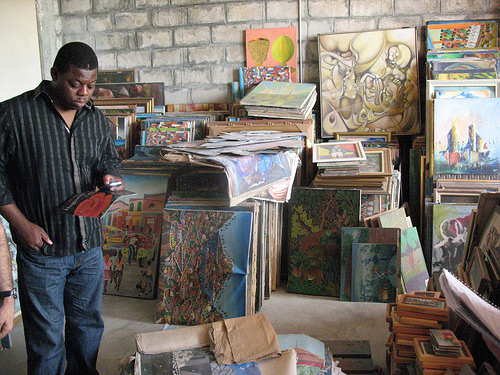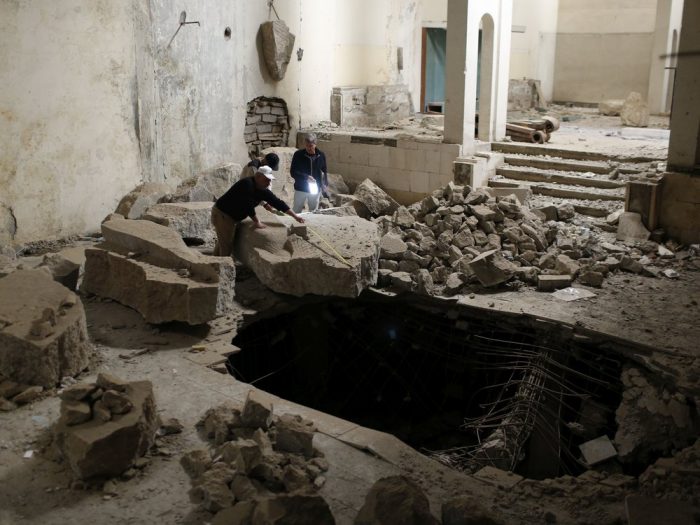How the Smithsonian Protects Cultural Heritage Around the World
In the wake of crisis and disaster, rescue workers led by the Smithsonian step in to safeguard irreplaceable treasures
The SmithsonianCultural Rescue Initiative, perhaps the world’s most significant ongoing collaboration to preserve irreplaceable artifacts, artworks, sites and heritage, really got its start with the 2010 earthquake in Haiti. When the magnitude 7 earthquake struck, hundreds of thousands were killed, injured and displaced from their homes. Already-fragile infrastructure was destroyed, including the country’s rich cultural heritage: historic buildings, museums, libraries, archives, galleries, churches, theaters and marketplaces.

As Richard Kurin, then the Smithsonian under secretary for history, art, and culture, explained: “We cannot survive if we cannot draw on our history, heritage and community. Culture gives us the strength to move forward.” Working with the U.S. State Department and the Haitian government, Kurin and current SCRI director Corine Wegener brought together American, Haitian and international organizations for a cultural recovery project that stabilized more than 30,000 cultural items. The project also offered numerous conservation courses, workshops and apprenticeships to more than 100 Haitian participants. The work continues today in a new permanent conservation facility at Quisqueya University in Port-au-Prince.
The Haiti project galvanized the cultural preservation community, and in 2012, the Smithsonian formed the Cultural Rescue Initiative. This group is tasked with preserving cultural heritage threatened by natural disasters, major accidents, armed conflict and sectarian violence. SCRI collaborates with government agencies, international organizations and communities to develop policies and best practices. It trains first responders, law enforcement and the military on cultural heritage preservation. And in moments of acute crisis, SCRI provides on-the-ground response, support and resources.
/https://tf-cmsv2-smithsonianmag-media.s3.amazonaws.com/filer_public/ec/e5/ece5401d-fac7-4956-afc6-1018b8d81a9c/usvi_scri_heart_training.jpeg)
Today Smithsonian staff are helping Iraqi colleagues rebuild and restore the treasures of the Mosul Cultural Museum, destroyed by ISIS six years ago. Last year, when tornadoes wracked the Midwest, SCRI hosted a “Save Your Family Treasures” online training for communities affected. In August 2020, after the massive port chemical explosion in Beirut, SCRI provided remote expertise and resources to Blue Shield Lebanon to assess damage and stabilize collections in the devastated historic district.

I am deeply proud of SCRI’s work because I know that culture is so much more than treasured sites or artifacts. It is the glue that holds communities and countries together during times of strife and crisis. It is the beating heart of a people, an irreplaceable record of human creativity, and a vital source of sustenance and support.
Read more:
Torch | Love among the ruins: Rescuing Haiti’s artistic heritage (si.edu)
Torch | On the road in Haiti: The Secretary’s travel journal (si.edu)
Torch | On the road in Haiti: The Secretary’s travel journal (si.edu) Part Two
This post was originally published in the January 2022 issue of Smithsonian magazine. Copyright 2022 Smithsonian Institution. Reprinted with permission from Smithsonian Enterprises. All rights reserved. Reproduction in any medium is strictly prohibited without permission from Smithsonian Institution.
Posted: 6 January 2022
- Categories:







